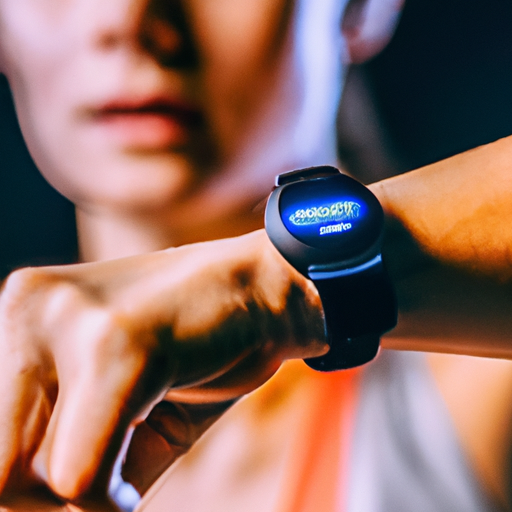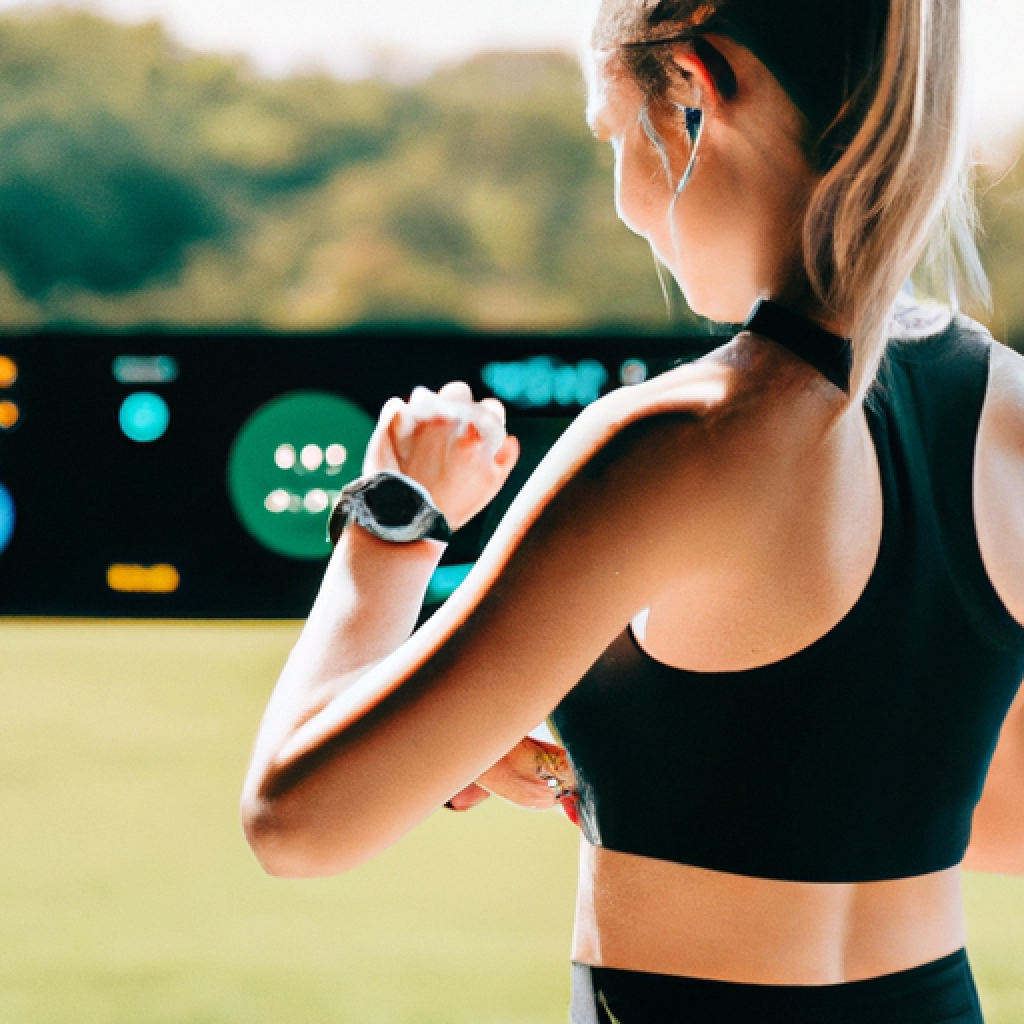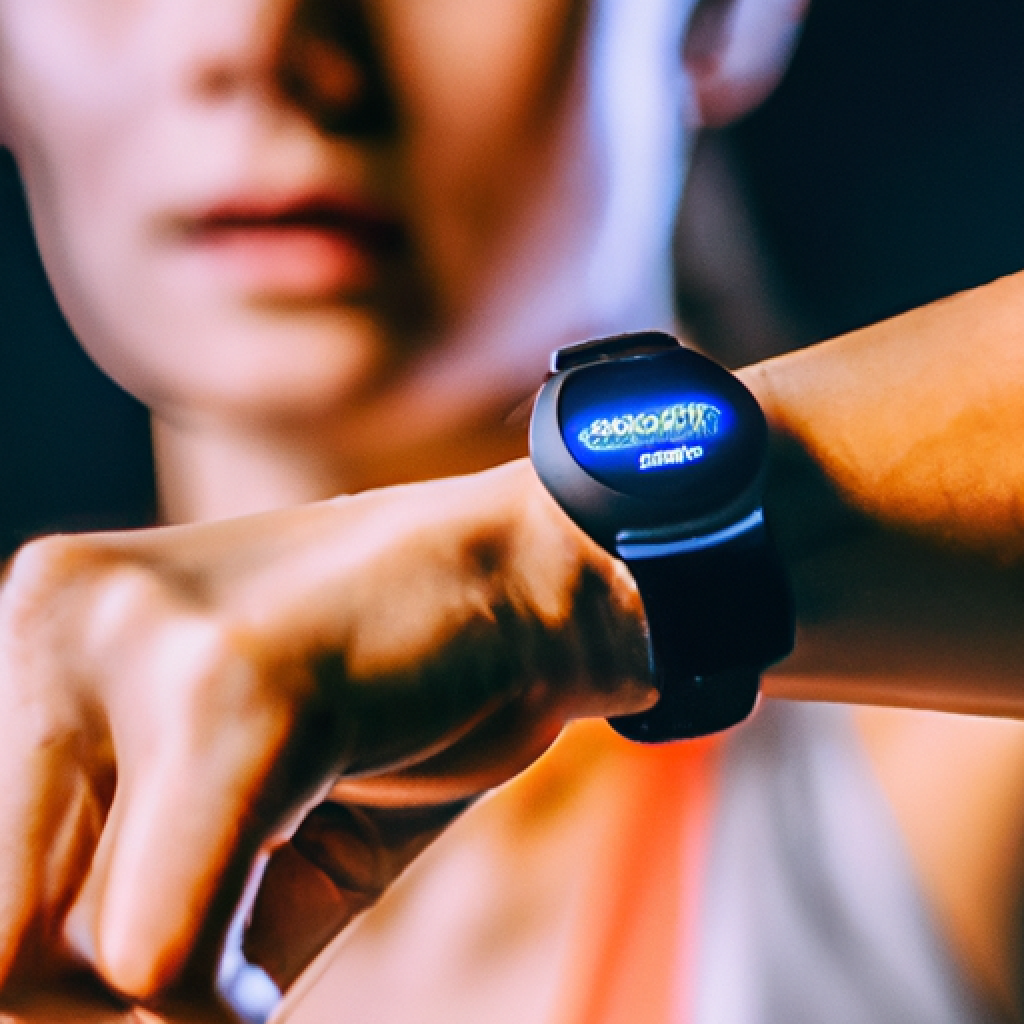What Is The Best Wearable Technology For Fitness?

I’ve always been on the lookout for the best wearable technology to enhance my fitness routine, but the options can be overwhelming. With so many devices on the market claiming to be the ultimate fitness companion, it’s hard to know where to start. In this article, I’ll be exploring the top contenders for the best wearable technology for fitness, weighing the pros and cons of each, and ultimately helping you make an informed decision on which gadget is right for you. So, let’s strap in and get ready to boost our fitness game with the latest and greatest wearable technology!
Understanding Wearable Technology
Definition of Wearable Technology
Wearable technology refers to electronic devices or gadgets that are designed to be worn on the body, typically as accessories or clothing items. These devices are equipped with sensors and other technologies that can track various aspects of an individual’s physical activities, such as heart rate, steps taken, calories burned, sleep patterns, and more. Wearable technology has gained significant popularity in the fitness industry due to its ability to provide real-time data and insights that can enhance fitness activities and practices.
Benefits of Using Wearable Technology for Fitness
The use of wearable technology has numerous benefits for individuals looking to improve their fitness levels. Firstly, it provides accurate and detailed data about one’s physical activities, allowing for a better understanding of progress and areas for improvement. This data can be used to set realistic goals and track progress over time. Additionally, wearable technology can serve as a motivator by providing real-time feedback and reminders, encouraging users to stay active and maintain healthy habits. Furthermore, many wearable devices also offer features such as GPS tracking, music streaming, and social connectivity, which can enhance the overall fitness experience.
How Wearable Technology Enhances Fitness Activities and Practices
Wearable technology enhances fitness activities and practices by providing users with valuable insights and real-time feedback. By tracking metrics such as heart rate, steps taken, and calories burned, individuals can better understand the intensity and effectiveness of their workouts. This information can help users optimize their training routines, ensuring they are getting the most out of their exercise sessions. Moreover, wearable devices often come with accompanying mobile applications, which allow users to analyze and interpret their data in a user-friendly and visually appealing format. This makes it easier to identify patterns, set goals, and make informed decisions regarding one’s fitness journey.
Important Features to Consider
Accuracy of Data
One of the most crucial features to consider when choosing wearable technology for fitness is the accuracy of the data it provides. An accurate device ensures that the information gathered is reliable and can be used for effective tracking and analysis. Look for devices that use advanced algorithms and multiple sensors to ensure accurate measurements of parameters such as heart rate, steps, distance, and sleep patterns.
Battery Life
Battery life is an essential aspect to consider, as it determines how long the device can be used before requiring charging. It is important to choose a device with a battery life that suits your lifestyle and activity levels. If you engage in prolonged workouts or outdoor activities, it is advisable to opt for a device with a longer battery life to avoid interruptions during your fitness routines.
Comfort and Design
Comfort and design play a significant role in the overall user experience. The device should be lightweight, adjustable, and have a comfortable strap or band that does not cause discomfort during movement or workouts. It should also have an ergonomic design that allows for easy navigation and interaction with the device’s interface.
Water and Sweat Resistance
Since fitness activities often involve sweating and exposure to water, it is important to choose a device that is water and sweat resistant. This ensures the durability and longevity of the device, as well as offering peace of mind during intense workouts or outdoor activities.
Connectivity and Compatibility
Consider the connectivity and compatibility options of the wearable technology you are considering. Most devices offer Bluetooth connectivity, allowing for easy syncing with smartphones and other smart devices. Compatibility with popular operating systems such as iOS and Android is also important, as it ensures seamless integration with existing technology.
Additional Features
While the primary purpose of wearable technology for fitness is to track physical activities, many devices also offer additional features that can enhance the overall user experience. Some popular additional features include GPS tracking, music streaming, smart notifications, social connectivity, and sleep tracking. Consider which additional features are important and relevant to your fitness goals and choose a device that offers those features.

Analyzing Fitness Trackers
Overview of Fitness Trackers
Fitness trackers are wearable devices specifically designed to monitor and track physical activities and health-related data. These devices typically come in the form of wristbands or clip-on devices that can easily be attached to clothing or accessories. Fitness trackers use a combination of sensors, such as accelerometers and heart rate monitors, to collect data on steps taken, distance traveled, calories burned, and sleep patterns. They are often accompanied by mobile applications that allow users to analyze and interpret their data.
Best Fitness Trackers in the Market
When it comes to choosing the best fitness tracker for your needs, there are several top-rated options available in the market. Some popular choices include Fitbit Charge 4, Apple Watch Series 6, Garmin Vivosmart 4, Samsung Galaxy Fit 2, and Xiaomi Mi Band 6. Each of these fitness trackers offers a range of features and functionalities to suit different preferences and budgets. It is important to consider factors such as accuracy, battery life, compatibility, and design when selecting the best fitness tracker for you.
Pros and Cons of Using Fitness Trackers
Using fitness trackers comes with several advantages. Firstly, fitness trackers provide real-time data and feedback, allowing users to monitor their progress and make adjustments to their fitness routines as needed. They can serve as a source of motivation by setting daily activity goals and providing rewards or reminders when those goals are achieved. Fitness trackers also offer features such as heart rate monitoring, sleep tracking, and GPS tracking, which can enhance the overall fitness experience.
However, there are also some downsides to using fitness trackers. Some users may find the constant tracking and monitoring to be overwhelming and stressful, leading to an unhealthy obsession with meeting daily targets. Additionally, while fitness trackers aim to provide accurate data, they may still have limitations in certain aspects, such as step counting accuracy or heart rate variability measurements. It is important to understand that fitness trackers should be used as tools to assist in fitness goals, rather than relying solely on their data for health decisions.
Examining Smart Watches
Understanding Smart Watches
Smart watches are wearable devices that not only track fitness activities but also offer a range of additional features and functionalities, similar to a smartphone. In addition to fitness tracking capabilities, smart watches provide features such as phone notifications, music streaming, GPS navigation, smartphone apps, and contactless payment options. Smart watches often have touchscreen displays and are designed to be worn on the wrist, making them an all-in-one device for fitness and everyday use.
Top-rated Smart Watches for Fitness
Several top-rated smart watches are specifically designed for fitness enthusiasts. Some popular options include the Apple Watch Series 6, Garmin Forerunner 945, Samsung Galaxy Watch 4, Fitbit Versa 3, and Fossil Gen 5. These smart watches offer advanced fitness tracking capabilities, accurate heart rate monitoring, GPS tracking, and a wide range of additional features to enhance the overall user experience. The selection of the best smart watch for fitness depends on personal preferences, budget, and compatibility with other devices.
Advantages and Downsides of Using Smart Watches for Fitness
Using a smart watch for fitness purposes has many advantages. Firstly, smart watches provide a comprehensive set of fitness features, including advanced activity tracking, heart rate monitoring, sleep tracking, and guided workouts. They offer seamless integration with popular fitness apps and platforms, making it easy to analyze and share data. With additional features such as phone notifications, music streaming, and navigation, smart watches offer convenience and versatility beyond fitness tracking.
However, there are also downsides to using smart watches for fitness. Their advanced features and capabilities often come at a higher price point compared to simpler fitness trackers. Additionally, the larger size and heavier weight of smart watches may not be ideal for some individuals during intense workouts. It is important to carefully consider the specific needs and preferences when deciding whether a smart watch is the best wearable technology for fitness.

Uncovering GPS Sports Watches
Introduction to GPS Sports Watches
GPS sports watches are specialized wearable devices that primarily focus on providing accurate GPS tracking for outdoor activities and sports. These devices are designed specifically for athletes and fitness enthusiasts who engage in activities such as running, cycling, swimming, and hiking. GPS sports watches use satellite technology to track distance, speed, and route data, providing valuable insights for training and performance analysis.
Leading GPS Sports Watches for Fitness
There are several leading GPS sports watches in the market, each offering unique features to cater to different sports and fitness needs. Some popular options include Garmin Fenix 6, Polar Vantage V2, Suunto 9 Baro, Coros Apex Pro, and the Apple Watch Series 6 (with built-in GPS). These GPS sports watches offer accurate tracking, long battery life, durability, and advanced features specific to different sports. Depending on individual preferences, sports watches should be chosen based on factors such as activity compatibility, ease of use, and overall durability.
Pros and Cons of Using GPS Sports Watches
Using a GPS sports watch has several advantages for fitness enthusiasts and athletes. The accurate GPS tracking provides detailed information about distance, speed, and elevation, allowing for precise training and performance analysis. GPS sports watches often come with additional features such as heart rate monitoring, cadence tracking, and route planning, making them suitable for a wide range of sports. Furthermore, these watches provide long-lasting battery life, ensuring they can withstand prolonged outdoor activities.
However, there are also downsides to using GPS sports watches. While they excel in outdoor activities, they may not be as effective for tracking indoor exercises or everyday activities. The advanced features and complexity of GPS sports watches may also make them less user-friendly for casual fitness enthusiasts. Additionally, GPS sports watches tend to have a higher price point compared to other wearable devices, making them a more significant investment for fitness tracking.
Exploring Heart Rate Monitors
The Role of Heart Rate Monitors
Heart rate monitors are wearable devices specifically designed to measure and track an individual’s heart rate during physical activities. These devices typically consist of a strap that is worn around the chest or a sensor that is placed on the wrist. Heart rate monitors use optical sensors or electrodes to detect and translate the heart’s electrical activity into heart rate measurements. Heart rate monitoring provides valuable insights into the intensity of workouts, allowing individuals to optimize their training and avoid overexertion.
Superior Heart Rate Monitors for Fitness
Several heart rate monitors are considered superior in terms of accuracy and reliability. Some top choices include the Polar H10, Garmin HRM-Pro, Wahoo Tickr X, Scosche Rhythm+, and the Apple Watch Series 6 (with built-in heart rate monitoring). These heart rate monitors offer advanced features such as real-time heart rate tracking, heart rate variability analysis, and compatibility with popular fitness apps. The selection of a heart rate monitor depends on factors such as personal comfort, compatibility with other devices, and budget.
Benefits and Limitations of Heart Rate Monitors
Using a heart rate monitor during fitness activities offers numerous benefits. Firstly, heart rate information provides insights into cardiovascular fitness and allows individuals to monitor their exertion levels during workouts. Tracking heart rate zones can help optimize training, ensuring that individuals are working at an appropriate intensity for their goals. Heart rate monitors also allow for accurate calorie burn estimations and provide feedback on recovery and overall cardiovascular health.
However, heart rate monitors also have limitations that should be considered. Optical heart rate sensors may not be as accurate during high-intensity exercises or activities that involve significant arm movements. Chest strap heart rate monitors, while generally more accurate, may be uncomfortable for some individuals during prolonged use. Understanding these limitations and considering personal preferences are important when deciding if a heart rate monitor is the best wearable technology for fitness needs.

Investigating Sleep Trackers
Sleep Trackers and their Importance
Sleep trackers are wearable devices or smartphone applications that provide insights into an individual’s sleep patterns and quality. Sleep plays a vital role in overall health and fitness, and tracking sleep can help individuals understand their sleep habits better. Sleep trackers often use sensors such as accelerometers, heart rate monitors, and temperature sensors to gather data on sleep duration, sleep stages, sleep quality, and sleep disturbances.
Best Sleep Trackers in the Market
There are several highly regarded sleep trackers available in the market. Popular options include the Fitbit Sense, Oura Ring, Garmin Vivosmart 4, Withings Sleep Analyzer, and the Apple Watch Series 6 (with sleep tracking capabilities). These sleep trackers offer different features such as advanced sleep stage tracking, sleep score analysis, smart wake-up alarms, and personalized sleep coaching. Selection should be based on factors such as accuracy, comfort, ease of use, and compatibility with other devices.
Pros and Cons of Using Sleep Trackers
Using a sleep tracker offers numerous benefits for optimizing sleep and overall wellness. Sleep trackers provide detailed data on sleep patterns, allowing individuals to identify factors that may be affecting their sleep quality, such as sleep disruptions or irregular sleep patterns. Sleep trackers often offer personalized sleep recommendations and insights, helping users establish healthy sleep habits and routines. Furthermore, some sleep trackers offer features such as silent alarms, relaxation sounds, and gentle wake-up functions, enhancing the overall sleep experience.
However, there are also limitations to using sleep trackers. Sleep trackers may not be as accurate as professional sleep studies conducted in a laboratory setting, especially when it comes to identifying specific sleep disorders. The placement and comfort of wearable sleep trackers may also affect sleep quality, particularly for individuals who are sensitive to wearing devices during sleep. It is important to consider these limitations and use sleep trackers as tools to gather general insights rather than relying solely on their data for diagnosing sleep disorders.
Looking into Body Fat Monitors
Understanding Body Fat Monitors
Body fat monitors, also known as body composition analyzers, are wearable devices or scales that measure body fat percentage and other metrics related to body composition. These devices use various methods such as bioelectrical impedance analysis or dual-energy X-ray absorptiometry (DXA) to estimate the amount of body fat within the body. Body fat monitors help individuals track their progress and make informed decisions regarding nutrition and fitness goals.
Top Body Fat Monitors for Fitness
There are several top-rated body fat monitors available in the market, each offering unique features for body composition analysis. Popular choices include the Withings Body+, Fitbit Aria 2, Tanita BC-554 Ironman, Omron Body Composition Monitor, and the Garmin Index Smart Scale. These body fat monitors provide accurate measurements of body fat percentage, muscle mass, bone mass, and hydration levels. Consideration should be given to factors such as measurement accuracy, user-friendly interfaces, and compatibility with other devices.
Advantages and Downsides of Body Fat Monitors
Using a body fat monitor for fitness goals has several advantages. Firstly, tracking body fat percentage provides a more comprehensive understanding of body composition beyond weight alone. This information can help individuals set realistic goals and monitor progress. Body fat monitors also offer insights into muscle mass, hydration levels, and bone density, allowing for targeted fitness and nutrition plans. Additionally, some body fat monitors offer features such as trend analysis and user profiles, making it easy to track changes over time for multiple individuals.
However, there are also downsides to using body fat monitors. The accuracy of these devices may vary, and factors such as hydration levels or skin temperature can impact the results. In some cases, body fat monitors may underestimate or overestimate body fat percentage, rendering the data less reliable. Additionally, the initial cost of body fat monitors may be higher compared to simple weighing scales. It is important to understand these limitations and use body fat monitors as tools for tracking trends and general progress rather than relying solely on their measurements.

Comparing Different Types of Wearable Technology for Fitness
Comparing in terms of Functionality
When comparing different types of wearable technology for fitness, it is important to consider the functionality offered by each category. Fitness trackers excel in tracking general physical activities and providing comprehensive data on steps, calories burned, and sleep patterns. Smart watches offer a broader range of features, including fitness tracking, smartphone notifications, GPS navigation, and music streaming. GPS sports watches focus on providing accurate tracking for outdoor activities and specific sports. Heart rate monitors specialize in tracking heart rate during exercise. Sleep trackers focus on analyzing sleep patterns and quality. Lastly, body fat monitors provide insights into body composition.
Comparing based on Price
Price is another important factor to consider when comparing wearable technology for fitness. Fitness trackers generally have a lower price point compared to smart watches, GPS sports watches, and advanced heart rate monitors. Smart watches and GPS sports watches typically fall in a higher price range due to their additional features and capabilities. Heart rate monitors and sleep trackers can vary in price depending on the accuracy and advanced features they offer. Body fat monitors may also have a range of prices depending on the specific technology used.
Comparing according to User Feedback and Reviews
User feedback and reviews provide valuable insights into the effectiveness and user satisfaction of different wearable technology for fitness. It is important to read reviews and consider the experiences of other users when comparing and choosing the best wearable technology for individual needs. Pay attention to factors such as accuracy, ease of use, comfort, battery life, and compatibility with other devices. User feedback can provide valuable information about issues or limitations that may not be apparent from the manufacturer’s specifications alone.
FAQs on Best Wearable Technology for Fitness
Commonly Asked Questions
- Q: Are wearable devices accurate in tracking fitness activities?
- Q: Can I wear a fitness tracker while swimming?
- Q: Do I need a smartwatch or a fitness tracker for basic fitness tracking?
- Q: How do sleep trackers accurately measure sleep patterns?
- Q: Is it necessary to wear a heart rate monitor during every workout?
- Q: Can body fat monitors be used by individuals with medical implants?
- Q: Are GPS sports watches suitable for all sports?
Relevant and Useful Answers
-
A: While wearable devices aim to provide accurate measurements, there may be variations in accuracy depending on the specific device and activity being tracked. It is advisable to choose devices with advanced sensors and positive user reviews regarding accuracy.
-
A: Many fitness trackers are designed to be water and sweat resistant, allowing them to be worn while swimming. However, it is essential to check the specific specifications of the device to ensure it is suitable for swimming or water-based activities.
-
A: Basic fitness tracking can be accomplished with either a smartwatch or a fitness tracker. The choice depends on personal preferences and desired features. Fitness trackers often offer a more focused and affordable option for individuals primarily interested in tracking physical activities.
-
A: Sleep trackers use various sensors and algorithms to analyze factors such as movement, heart rate, and breathing patterns to estimate sleep stages and quality. While they may not provide the same level of accuracy as a professional sleep study, they offer useful insights into sleep patterns.
-
A: Wearing a heart rate monitor during every workout is not necessary for everyone. It is particularly beneficial for individuals looking to optimize their training and monitor their exertion levels. Casual fitness enthusiasts may not require continuous heart rate monitoring for general fitness goals.
-
A: Many body fat monitors use bioelectrical impedance analysis, which sends a low electrical current through the body. While they are generally safe for most individuals, it is advisable to consult with a healthcare professional if you have any concerns or specific conditions.
-
A: GPS sports watches are suitable for a wide range of sports, including running, cycling, swimming, hiking, and more. However, it is important to consider the specific features and compatibility with the intended activities. Some GPS sports watches may have specialized features for specific sports.








